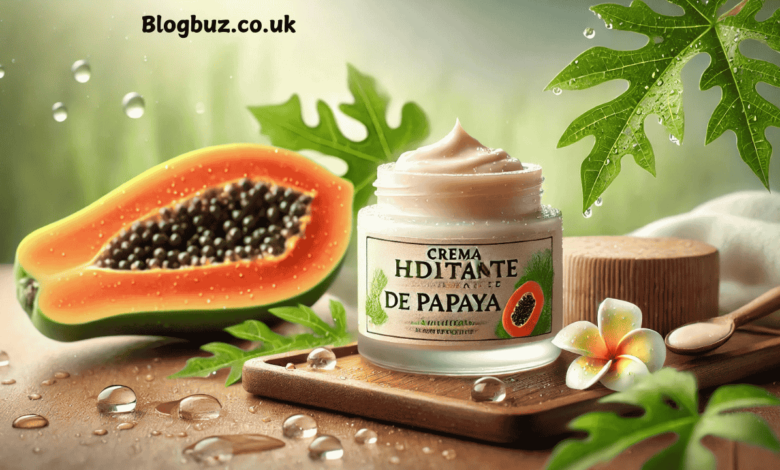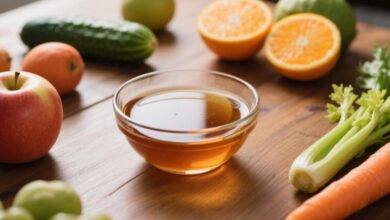Wonders of Papaya in Skincare: A Deep Dive into the Crema Hidratante de Papaya Tesis

In the constantly changing field of cosmetics, natural ingredients continue to take center stage, offering both efficacy and harmony with nature. One such ingredient making significant waves is papaya, known for its hydrating and rejuvenating properties. This article delves into the comprehensive research in the Crema Hidratante de Papaya doctoral tesis, exploring how this tropical fruit transforms skincare routines, especially in diverse climates like Peru.
The Richness of Papaya in Skincare
Papaya, a fruit native to the tropics, is packed with vitamins, enzymes, and antioxidants, making it an ideal candidate for skincare formulations. The enzyme papain, in particular, functions as a natural exfoliant, gently removing dead epidermis cells and aiding skin renewal. This makes papaya-based moisturizers hydrating and effective in enhancing skin texture and radiance.
Tesis Overview: Objectives and Methodology
The tesis on Crema Hidratante de Papaya investigates the full spectrum of benefits of papaya in moisturizing creams. The research encompasses a variety of objectives:
- Efficacy Testing: Conducting clinical trials to assess hydration levels, skin elasticity, and overall texture after regular use of papaya moisturizers.
- Formulation Studies: Experimenting with different concentrations of papaya extract and other complementary natural ingredients to find the optimal skincare formula.
- Consumer Insights: Analyzing market trends and consumer preferences towards natural skincare products in Peru.
The robust methodology involves laboratory tests and real-world trials to ensure the findings are scientifically valid and practically applicable.
Key Findings and Benefits
The research highlights several key benefits of papaya in skincare:
- Hydration: Papaya moisturizers provide deep and lasting hydration, making the skin look plumper and supple.
- Exfoliation: The natural exfoliation properties of papain promote a smoother and more glowing skin complexion.
- Antioxidant Protection: Papaya’s antioxidants help combat free radicals, thereby diminishing the appearance of aging, such as fine lines, wrinkles, and dark spots.
- Anti-inflammatory Properties: Papaya is beneficial for calming irritated skin, reducing redness, and helping with conditions like acne.
Cultural and Environmental Considerations
In a country like Peru, with its varied climate from humid rainforests to arid coastal areas, skincare needs can vary greatly. The tesis explores how formulations might be adapted to meet these diverse conditions, offering lighter or richer creams as the environmental context requires.
Challenges in Natural Skincare Formulation
While the benefits are clear, the tesis does not shy away from discussing the challenges:
- Stability: Natural ingredients like papaya can degrade quickly, posing challenges to ensuring skincare products’ long-term stability.
- Allergenic Potential: The tesis examines the potential for allergic reactions and the importance of thorough testing.
Sustainability and Ethical Practices
The development of papaya-based moisturizers is also viewed through the lens of sustainability and ethics. The tesis covers:
- Sustainable Sourcing: Ensuring papaya is grown and harvested in ways that do not harm the environment.
- Ethical Manufacturing: Considering labor practices and ensuring fair conditions for all workers involved in the production process.
Market Impact and Future Directions
The tesis findings suggest a promising future for papaya-based skincare products. As the demand for natural and organic products continues to increase among consumers, the market for such products is expanding. The tesis proposes further research into other native Peruvian fruits that could similarly benefit skincare, potentially broadening the range of natural products available.
Conclusion
The Crema Hidratante de Papaya tesis provides compelling evidence of papaya’s benefits in skincare, backed by rigorous scientific research. It paves the way for innovative natural skincare solutions that align with consumer desires for effectiveness, natural ingredients, and ethical production practices. As the skincare industry continues to evolve, the insights from this tesis will undoubtedly influence future developments in natural skincare formulations.
FAQs on Crema Hidratante de Papaya Tesis
What are the main benefits of using a papaya-based moisturizing cream?
Papaya-based moisturizing creams offer multiple benefits, including deep hydration, natural exfoliation through the enzyme papain, antioxidant protection to combat premature aging, and anti-inflammatory properties that soothe sensitive or irritated skin.
How does the enzyme papain in papaya improve skin health?
Papain, a natural enzyme found in papaya, functions as a gentle exfoliant by removing dead epidermis cells. This promotes skin renewal, creating a smoother, brighter, youthful complexion.
What challenges are addressed in the Crema Hidratante de Papaya tesis?
The tesis highlights challenges like ensuring the stability of natural ingredients, preventing allergenic reactions in sensitive individuals, and maintaining sustainable and ethical production practices for papaya-based products.
Why is papaya an ideal ingredient for moisturizing creams in Peru?
Papaya thrives in Peru’s tropical climate and is rich in vitamins, antioxidants, and enzymes that benefit various skin types. Its availability and versatility make it a sustainable and effective ingredient for skin care, especially in Peru’s diverse climates.
How does the tesis contribute to the future of natural skincare products?
The research serves as a foundation for creating innovative natural skincare formulations. It encourages using sustainable ingredients like papaya and opens the door to exploring other native Peruvian fruits for beauty products.
You May Also Read: Crema Hidratante de Aguaje en Bolivia: A Natural Skincare Revolution




